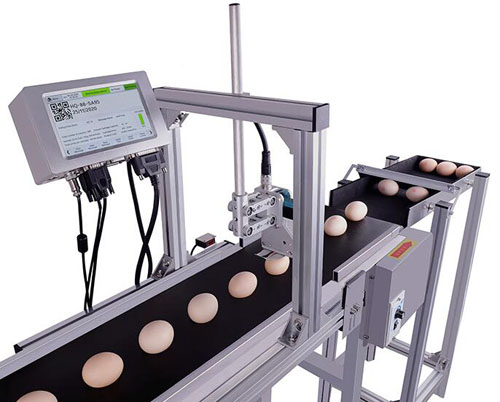6 Tips for Finding the Right Coding and Marking Machine
1. Consider your operational requirements
It is important to find the right coding and marking machine for your desired application. You should also consider a number of factors to make them useful for your operation.
▴ The budget your company has set
▴ Readability and longevity of the print
▴ The speed you want
▴The type of substrate or material to which the mark will be applied
▴ The data you need, such as bar codes, graphics, and variable data
2. Focus on flexibility
Integration is a very important factor to help you make the most of your coders and markers. With the rapid evolution of technology, automation and integration should be a priority. Stand-alone equipment may no longer be your best choice, especially machine options that can be integrated with other equipment to perform more operations.
3. Choose efficiency
If you can improve coding efficiency, you can reduce the costs associated with the process. Look for coding and marking machines that will save you time and money. This will allow for high volume production while eliminating unnecessary waste of resources.
It is important to look at not only the cost of hardware, but also how much you are spending on supplies and consumables. Often, operating costs must be considered to understand the true value of coders and markers.
4. Know the right coding and marking options
Different coders and markers are made for specific purposes, so it's important that you know which one is right for you. When you need one, you don't want to end up with a machine that doesn't have barcode capability.
Would you benefit from an inkjet or laser coder? Will a thermal printer meet your needs? If you will be using coders and coders for carton and product packaging, an inkjet coder will be your best choice. However, when used for bar codes, it will have its limitations. On the other hand, a laser coder will have a higher upfront cost, but can be used for certain barcode applications. Its upfront investment can be offset because they can run for longer periods of time without problems.
5. Work with a trusted brand
One of the easiest ways to get the most out of your coders and markers is to choose a trusted brand in the industry. Brands that have established a good reputation adhere to practices that protect their image. They consistently deliver excellence and quality that meet desired standards to ensure your investment is safe.
6. Don't ignore future changes
Remember that packaging configurations are constantly evolving. Since they are changing faster than ever, it is imperative that you find a versatile coding and marking machine that can easily configure new packaging substrates. This will have an impact on your future sales, as fresh packaging affects the way your target market perceives your product.
If you are running a plant and have packaging requirements to handle, you will need the right coding and marking machine that can meet your needs. While there are many options available, you must be careful to ensure that your choice will help make your process more efficient and leverage your best investment.
Need help finding a coding and marking machine? We have marking machines to meet a variety of needs and applications. Contact us today so we can help you.

评论
发表评论